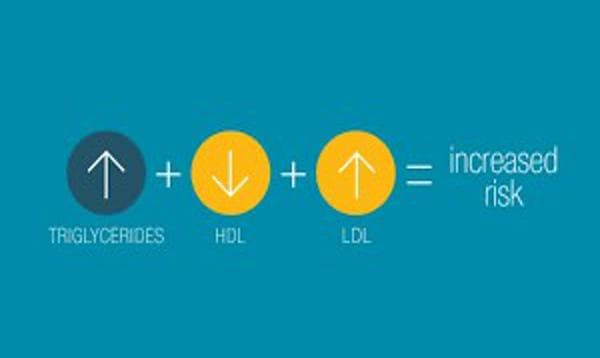
Cholesterol Ratio Calculator – Assess Your Heart Disease Risk
Learn about Cholesterol Ratio, its significance, calculation, and how to use it to assess your heart disease risk.
January 5, 2025
Learn about LDL and HDL Cholesterol, their differences, importance, and how to use the LDL & HDL Cholesterol Difference Calculator to maintain healthy cholesterol levels.

LDL (Low-Density Lipoprotein) and HDL (High-Density Lipoprotein) are two types of cholesterol found in your blood. LDL is often referred to as "bad" cholesterol because high levels can lead to plaque buildup in your arteries and result in heart disease. HDL is known as "good" cholesterol because it helps remove LDL cholesterol from the arteries and transport it to the liver for elimination.
The balance between LDL and HDL cholesterol is crucial for heart health. A higher ratio of LDL to HDL increases the risk of plaque formation and artery blockage, leading to cardiovascular diseases. Conversely, a higher level of HDL can protect against heart disease by facilitating the removal of excess cholesterol from the bloodstream.
To calculate the difference between LDL and HDL cholesterol, simply subtract the HDL level from the LDL level:
LDL & HDL Cholesterol Difference = LDL Cholesterol - HDL Cholesterol
For example, if your LDL cholesterol is 130 mg/dL and your HDL cholesterol is 50 mg/dL, the difference would be 80 mg/dL.
Maintaining healthy cholesterol levels is essential for preventing heart disease. High LDL levels contribute to plaque buildup in the arteries, which can lead to atherosclerosis, heart attacks, and strokes. Conversely, high HDL levels help reduce the risk by removing excess cholesterol from the bloodstream.
Our LDL & HDL Cholesterol Difference Calculator is user-friendly and provides an estimate of the difference between your LDL and HDL cholesterol levels. Enter your LDL and HDL cholesterol values to calculate the difference. Use this information to assess your cholesterol balance and take steps to improve it.
There are several myths about LDL and HDL cholesterol that can lead to confusion:
Understanding and managing the balance between LDL and HDL cholesterol is key to maintaining heart health. Use our LDL & HDL Cholesterol Difference Calculator to determine your cholesterol levels and take proactive steps to improve them. By adopting a heart-healthy diet, regular exercise, and healthy lifestyle choices, you can maintain healthy cholesterol levels and reduce the risk of heart disease.
More Articles

Learn about Cholesterol Ratio, its significance, calculation, and how to use it to assess your heart disease risk.
January 5, 2025

Learn about the Triglyceride-to-HDL Ratio, its importance, calculation, and how to use it to assess cardiovascular risk.
January 5, 2025

Learn about stroke, its risk factors, assessment, and how to use the Stroke Risk Assessment Calculator to measure your risk level and improve your health.
January 5, 2025

Learn about Coronary Heart Disease (CHD), its risk factors, calculation, and how to use the information to maintain heart health.
January 5, 2025

Discover Mean Arterial Pressure (MAP), its significance, calculation, and how to use it to assess circulatory health.
January 5, 2025